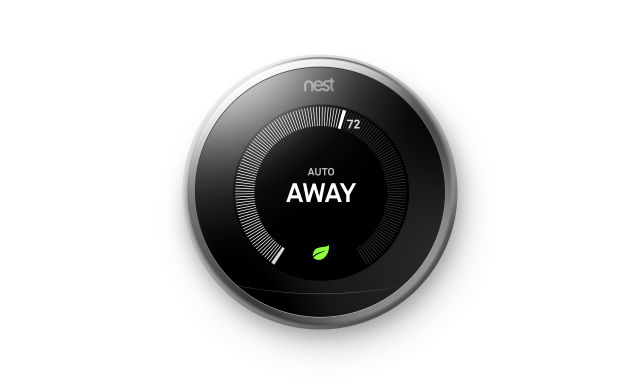Thermostats

Thermostats can be manually controlled or set to activate automatically. Based on timers or room temperature readings. Most thermostats contain two meters. First, the “set” temperature that the thermostat is asking for. Second, the actual temperature. The user can not only increase the set temperature by rotating the dial clockwise. But also, lower it by rotating it counter clockwise on a traditional dial type thermostat. Newer thermostats usually have digital displays. Which, can be used to adjust automated heating and cooling schedules.
Thermostat Location
Thermostats must be installed to read the rooms temperature correctly. To avoid false or “ghost” readings. Which, will cause unnecessary furnace or air conditioner cycling. The following locations may cause the thermostat to give false readings:
- Is your thermostat near a heat source? Such as a fireplace, hot water pipes, bright lights, direct sunlight or electrical appliances that produce heat.
- Was your thermostat placed in a drafty hallway. Or near a window or exterior door that is opened often; and
- Is your thermostat on an outside wall? Outside walls may make the thermostat “think” the air in the house is warmer or cooler than it really is.
Common Thermostat Problems and Solutions
- Erratic operation or fluctuating temperature can be an issue. This is often caused by poor pin connections between the thermostat. And, the backplate when the backplate is flexed against an uneven wall. Loosen the screws that attach the backplate to the wall. This allows the backplate to flatten out. Then, snap the thermostat back onto the backplate.
- A thermostat that doesn’t respond to changes in room temperature is a problem. This, can happen when there is air passing over the temperature sensor. More than likely, from a hole in the wall behind the thermostat. Where, wires enter from the air handling unit. Insulating the hole behind the thermostat with insulation, spray foam or any other insulating material may fix the problem.
- Inaccurate temperature readings can be a big problem. Thus, you may have to test the temperature sensor. Tape a thermometer to the wall next to the thermostat and wait 15 minutes. A faulty thermometer needs to be recalibrated. Instructions for recalibration vary by manufacturer.
- Loss of power may also be a problem. This, may be caused by the following two situations:
- Does the air handler power the thermostat. If so, check the circuit breaker meant for the air handler and make sure it has not tripped.
- Is your thermostat powered by batteries? Make sure they are lithium, not alkaline. In fact, alkaline batteries will die rapidly or cause erratic thermostat operation.
Maintenance and Other Tips
- Give the thermostat’s interior a light dusting with a small, soft paintbrush. Canned air can also be used to blow off dust. Twist the screws to remove the cover. Be sure to clean the contacts. Which, are small metal plates within the unit. Do not touch any of the interior parts with fingers. Especially, the wires coming from the transformer. Which, attach to the contacts.
- If the base is loose, tighten the screws. Check the wires coming from the transformer for any corrosion. Remove the wire from the contact and clean it, if there is any corrosion. With this in mind, use a wire stripper to remove the surrounding insulation. Then, cut back the wire and reconnect it.
- Make sure the terminal screws are tight.
- Do you have a wireless thermostat. If so, make sure the model number of the thermostat matches the model number of the receiver. In the event that, the model numbers do not match. Then, the stat and receiver will not be compatible.
- Make sure that your thermostat has been set to the proper position for the season. Which are cooling or heating. The air conditioner will not run with the switch set to “heating” and, conversely, the heating system won’t run if the thermostat has been set to “cooling.”
- Thermostats that contain a mercury switch must remain perfectly level or they may not control the temperature setting.
A Few Notes on Energy Savings
- Many people believe that furnaces work harder than normal to warm an area back up to a comfortable temperature. Which, will counteract energy savings gained from turning the thermostat down. This belief is a misconception. That, has been disproved by years of studies and research. Fuel is saved between the time the temperature is stabilized at the lower level. And, the next time heat is needed. The fuel required to re-heat the space is roughly equal to the fuel saved. While the building drops to a lower temperature.
- According to the U.S. Department of Energy, consumers can save 10% on their utility bills. By simply setting their thermostat back 10° to 15° for eight hours. This can be accomplished easily with a programmable thermostat.
- Be careful not to set the thermostat so low in the winter that pipes freeze. Or, to set your thermostat so low during the summer. Which, may allow humidity spawned mold to grow.


